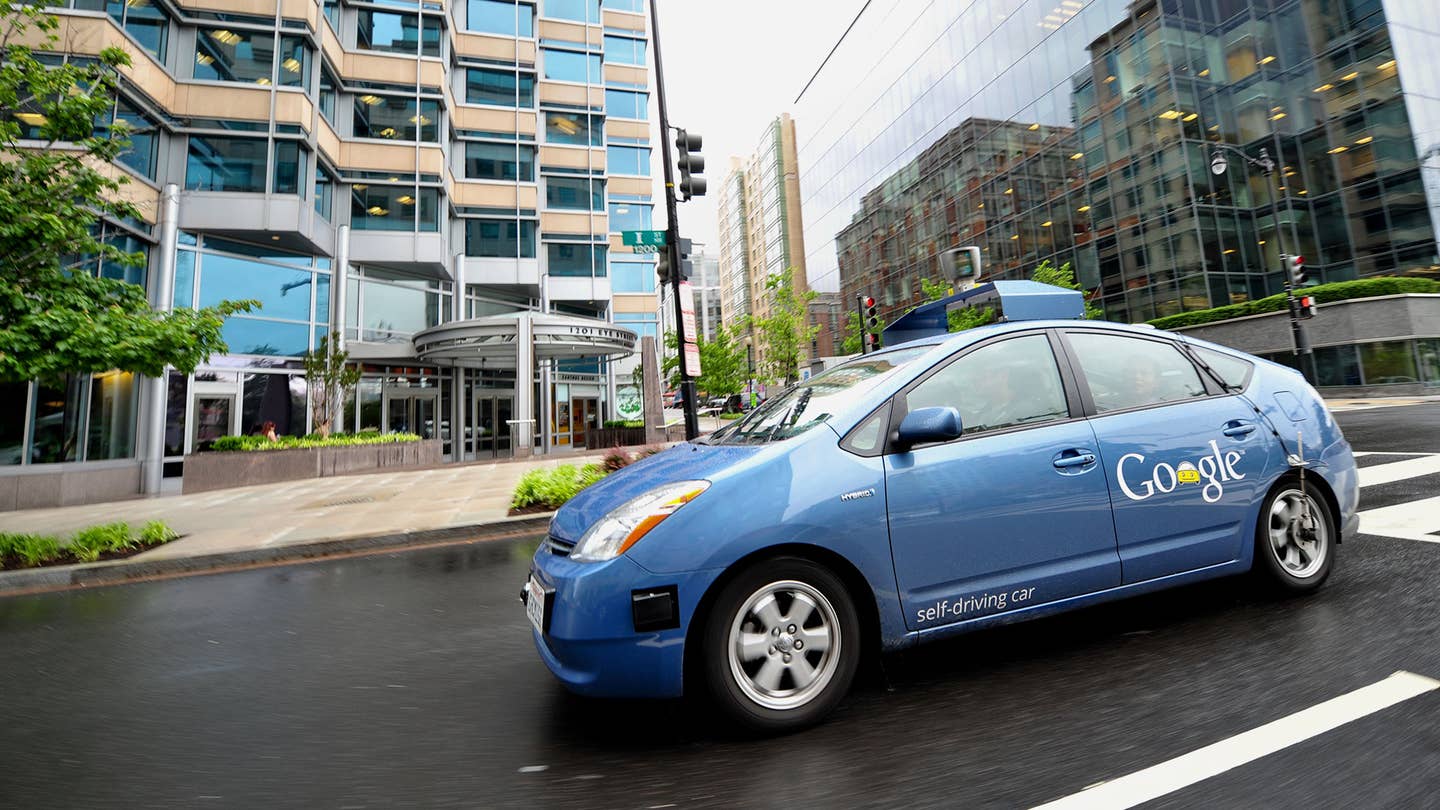Your Essential Autonomous Driving Primer
First lesson: Autonomous cars aren’t really autonomous—yet.

This has been one hell of a year for car geeks. Over the past 11 months, we have been gifted one instant classic after another: the Dodge Challenger SRT Hellcat and the sublime Lamborghini Aventador SV are just two that immediately come to mind. But one could argue—and one has—that the first notes of the car enthusiast's swan song were played this year, and they sounded just like a self-driving car. Autonomous vehicles are now the industry's biggest talking point.
This was the year autonomous driving became real. Well, sort of.
So what does autonomy mean? Today, a consumer can buy vehicles that can park themselves and, if needed, take control and course correct in an emergency. Systems like Mercedes-Benz's Intelligent Drive and Tesla's Autopilot can, essentially, drive the vehicle for you. The problem is, that’s only part of the story, and in all the excitement over self-driving cars, the consumer, the media and the carmakers’ marketing arms aren’t on the same page.
We think it’s time for an Autonomous Driving primer. Think of this as Autonomous 101.
What is autonomous driving, really?
Start with this: There is not a single production vehicle on sale that works in a fully autonomous fashion and allows drivers to "set it and forget it." The truth is, there are six different levels of autonomy, according to the German Federal Highway Research Institute (BASt):
Level 0 — Driver only
Level 1 — Driver assistance
Level 2 — Partial automation
Level 3 — High automation
Level 4 — Full automation
Level 5 — Autonomous/Driverless vehicles
To crystallize this, some real-world examples.
Level 0 is just about every car ever produced. A 1964 Ferrari GT/L "Lusso," for example, simply has a driver executing tasks behind the wheel. This is Level 0 autonomy.
In Level 1 cars, a driver controls longitudinal or lateral movement while a system can automate another task—to a degree. Cruise control, for instance, is Level 1 functionality. If you're driving a 2011 BMW 1 Series M and activate cruise control at 75 mph, you'll continue down the road at that set speed. The vehicle will automatically adjust the throttle to maintain that specific mph. A driver must intervene to change lanes, and reset the speed from the set 75 mph mark. Congratulations, you’ve operated an assisted car.
Today's most cutting-edge vehicles are Level 2. These systems take control of longitudinal and lateral movement. However, the driver can't pop an Ambien and cop some Z’s. With Level 2, the driver must be prepared to take over at any moment. Cars like the Hyundai Genesis and Mercedes-Benz S-Class benefit from a Level 2 system where the vehicle's active cruise control and lane-keep assist work together to maintain speed, mirror the car ahead from a safe distance and actively steer the vehicle in its lane.
Elon Musk made headlines in October when Tesla debuted its Level 2 system. Dubbed “Autopilot,” it is arguably the most advanced in this class. Autopilot makes use of a forward radar, a forward-looking camera, 12 sensors that monitor a 16-foot, 360-degree halo around the vehicle and what Tesla says is a high-precision, digitally controlled electric assist braking system. The thing that makes this system unique? You can change lanes by simply engaging a turn signal in Autopilot mode. But don't get too excited; you still have to execute and monitor the maneuver. YouTube is crowded with seeming Autopilot fails, or close calls with drivers having to correct their self-driving P90. Tesla’s lawyers make it clear that the driver behind the wheel is ultimately controlling the vehicle. In short, Autopilot is a step in the right AD direction, but it's far from perfect. Do not forget that.
Next is Level 3, high automation. Right now, there are no Level 3 production vehicles on the market. Like Level 2, these systems would take over longitudinal and lateral movement, except that drivers would not have to chaperone the car. If the vehicle encounters a problem, it would notify the driver with a take-over request, in which a driver will be given lead time to intervene.
Similarly, Level 4 cars aren’t on the market. The full automation classification is reserved for systems that default control longitudinal and lateral maneuvering. If the vehicle sends a take-over request to the driver and it is ignored, the system will automatically bring the vehicle to a minimal risk condition without a driver's intervention. Which is to say, it’ll avoid hitting something and safely stop the car.
The Platonic Ideal is Level 5, the driverless vehicle. This is what Google has been working on in San Francisco and Austin with a fleet of converted Toyota Prius and Lexus RX450h SUVs. Google is also testing its own goofy-looking, dashless prototype. Although Google has logged more than 1 million miles with its test vehicles, there's a lot of work left. The car has been involved in accidents, and a driverless test vehicle was recently pulled over by cops for traveling 24 in a 35 mph zone.
Google’s end game is to produce vehicles that make getting around easy at the touch of a button. Its self-driving car program has years of testing before deployment, but odds are good that our robot overlords are just biding their time offstage, waiting for public and regulatory attitudes to soften just enough. Then, they’ll pounce.
